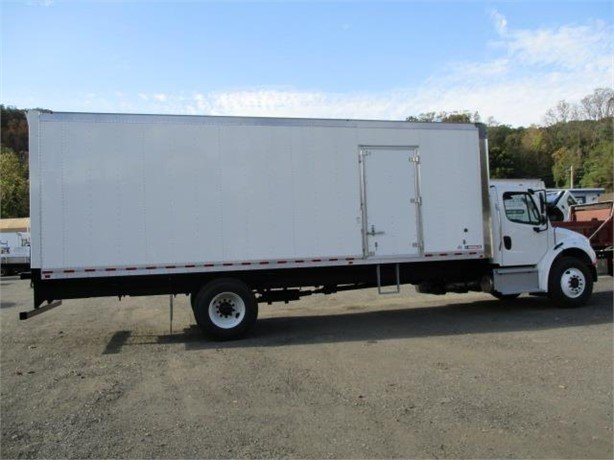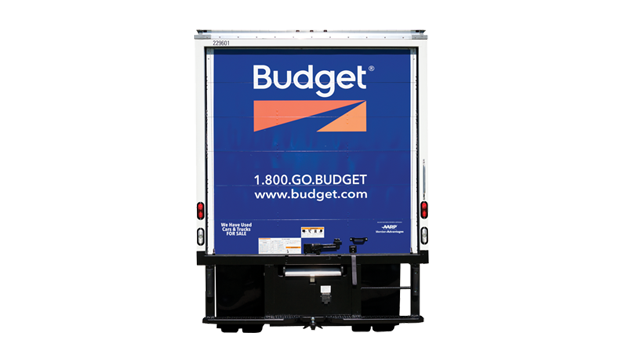The Ultimate Guide to 26-Foot Box Truck Height Clearance: Everything You Need to Know
Understanding the height clearance of a 26-foot box truck is absolutely crucial for anyone involved in moving, logistics, or transportation. Neglecting this aspect can lead to costly damages, delays, and even safety hazards. This comprehensive guide will delve into every facet of 26-foot box truck height clearance, providing you with the knowledge you need to navigate roads, bridges, and loading docks with confidence.
26 Foot Box Truck Height Clearance
We'll cover everything from standard dimensions and legal regulations to practical tips for avoiding common clearance-related issues. Let's get started!
Why Height Clearance Matters: A Real-World Perspective
Imagine this: you're behind the wheel of a fully loaded 26-foot box truck, approaching a bridge. You think you have enough clearance, but you're not entirely sure. The consequences of being wrong can be disastrous.
Based on my experience in the transportation industry, failing to account for height clearance is a surprisingly common mistake. It's not just about hitting a bridge; it's about damaging your truck, your cargo, and potentially causing serious accidents. This is why having a solid understanding of 26-foot box truck height clearance is non-negotiable.
Understanding the Standard Height of a 26-Foot Box Truck
The typical height of a 26-foot box truck generally falls within the range of 12 to 13.5 feet (3.6 to 4.1 meters). However, this is just an average, and there can be variations depending on the manufacturer, model, and any modifications made to the vehicle.
It's imperative to always check the specific height of the truck you're operating. This information is usually found in the owner's manual or on a sticker inside the cab. Never assume; always verify!
Factors Affecting the Actual Height

Several factors can influence the actual height of a 26-foot box truck, making it even more crucial to double-check before hitting the road.
-
Load Weight: A heavier load will compress the suspension, slightly decreasing the overall height. This might seem insignificant, but even a few inches can make a difference when dealing with low clearances.
-
Tire Pressure: Incorrect tire pressure can also affect the ride height of the truck. Ensure that tires are properly inflated to the recommended pressure.
-
Suspension Modifications: Any aftermarket modifications to the suspension system can alter the truck's height.

-
Roof-Mounted Accessories: Items like air conditioning units or cargo carriers installed on the roof will add to the overall height.

Legal Regulations and Height Restrictions
Most jurisdictions have regulations regarding maximum vehicle height. In the United States, the federal standard maximum height for commercial vehicles is generally 13 feet, 6 inches (4.11 meters).
However, state and local regulations may vary. It's the driver's responsibility to be aware of and comply with these regulations. Ignoring height restrictions can result in hefty fines, penalties, and even legal action.
How to Find Height Clearance Information on Your Route
Planning your route carefully is essential to avoid low-clearance obstacles. Here are some methods for finding height clearance information:
-
Commercial GPS Navigation Systems: These systems are specifically designed for trucks and take into account height and weight restrictions. They often include up-to-date information on bridge and tunnel clearances.
-
Trucking Route Planners: Several online and mobile apps are available that help truck drivers plan routes, factoring in height restrictions, weight limits, and other relevant information.
-
DOT Websites and Maps: State Departments of Transportation (DOTs) typically provide information on bridge clearances and other restrictions on their websites and maps.
-
Pre-Trip Route Surveys: If possible, conduct a pre-trip survey of your route to identify any potential clearance issues. This is especially important for unfamiliar routes.
-
Pay Attention to Signage: Always pay close attention to road signs indicating height restrictions. These signs are placed to warn drivers of potential hazards.
Pro tips from us: Always err on the side of caution. If you're unsure about the clearance, it's better to find an alternate route than to risk a collision.
Consequences of Ignoring Height Clearance
The consequences of disregarding height clearance can be severe:
-
Vehicle Damage: Hitting a low-clearance structure can cause significant damage to the truck, including the roof, body, and even the chassis.
-
Cargo Damage: Impact can damage or destroy the cargo being transported.
-
Traffic Delays: A collision with a bridge or other structure can cause major traffic delays.
-
Fines and Penalties: Drivers who violate height restrictions can face fines, points on their driving record, and even suspension of their commercial driver's license (CDL).
-
Accidents and Injuries: In severe cases, collisions with low-clearance structures can lead to accidents and injuries.
-
Increased Insurance Rates: Accidents caused by ignoring height clearance can result in higher insurance premiums.
Practical Tips for Safe Navigation
Here are some practical tips to help you navigate roads safely with a 26-foot box truck:
-
Know Your Truck's Height: As emphasized earlier, always know the exact height of your truck.
-
Plan Your Route Carefully: Use commercial GPS systems or trucking route planners to identify and avoid low-clearance areas.
-
Pay Attention to Signage: Be vigilant for signs indicating height restrictions.
-
Maintain a Safe Following Distance: This gives you more time to react to potential hazards.
-
Communicate with Co-Drivers: If you have a co-driver, work together to identify and avoid potential clearance issues.
-
Use a Spotter: When navigating tight spaces, consider using a spotter to guide you.
-
Trust Your Instincts: If you feel unsure about the clearance, it's best to find an alternate route.
Common Mistakes to Avoid
-
Assuming All Bridges Are the Same Height: Bridge heights vary widely. Never assume that all bridges have adequate clearance.
-
Ignoring Signage: Signs are there for a reason. Pay attention to them!
-
Relying Solely on GPS: GPS systems are helpful, but they're not foolproof. Always double-check the information.
-
Driving When Fatigued: Fatigue impairs judgment and reaction time. Get enough rest before driving.
-
Neglecting Pre-Trip Inspections: Always conduct a thorough pre-trip inspection to identify any potential issues.
Height Clearance and Loading Docks
Navigating loading docks with a 26-foot box truck requires careful attention to height clearance. Here's what you need to know:
-
Dock Height Variations: Loading dock heights can vary. Be sure to check the dock height before attempting to load or unload.
-
Adjusting Truck Height: Some loading docks have adjustable platforms that can be raised or lowered to match the truck's height.
-
Using Dock Plates: Dock plates or ramps can be used to bridge the gap between the truck and the loading dock.
-
Safe Loading Practices: Ensure that the truck is properly secured before loading or unloading.
The Future of Height Clearance Technology
Technology is constantly evolving to improve safety and efficiency in the transportation industry. Here are some emerging technologies that may help address height clearance issues:
-
Advanced Driver-Assistance Systems (ADAS): ADAS features like lane departure warning and automatic emergency braking can help prevent accidents caused by inattention or misjudgment.
-
Height Alert Systems: These systems use sensors to detect low-clearance structures and alert the driver.
-
Real-Time Clearance Data: Real-time data on bridge and tunnel clearances can be transmitted to drivers via GPS systems or mobile apps.
-
Augmented Reality (AR): AR technology can overlay information about height clearances onto the driver's view of the road.
Conclusion: Prioritizing Safety and Awareness
Understanding and respecting 26-foot box truck height clearance is paramount for safety, efficiency, and legal compliance. By knowing your truck's height, planning your routes carefully, and paying attention to signage, you can avoid costly damages, delays, and accidents. Remember, it's always better to err on the side of caution and find an alternate route if you're unsure about the clearance.
Pro tips from us: Stay informed about the latest regulations and technologies related to height clearance. Continuous learning and adaptation are key to safe and successful transportation operations.
By prioritizing safety and awareness, you can ensure that your 26-foot box truck operations run smoothly and efficiently. Drive safely!
External Link: Federal Motor Carrier Safety Administration (FMCSA) - For official regulations and safety information.
Comments
Post a Comment